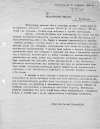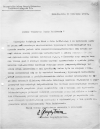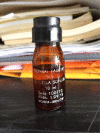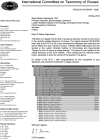Phage Therapy in Poland - a Centennial Journey to the First Ethically Approved Treatment Facility in Europe
- PMID: 32582061
- PMCID: PMC7291835
- DOI: 10.3389/fmicb.2020.01056
Phage Therapy in Poland - a Centennial Journey to the First Ethically Approved Treatment Facility in Europe
Abstract
Although phage discovery is an unquestionable merit of the English bacteriologist Frederick W. Twort and the Canadian-French microbiologist Félix d'Hérelle, who both discovered phages over 100 years ago, the Polish history of phage studies also dates back to those years. In contrast to the Western world, developing phage treatment in Poland has never been abandoned despite the country's tense history marked by the Second World War (WWII) and the communism era. Today, Poland takes a prominent and remarkable place in the phage research area. Furthermore, established in 2005, the Phage Therapy Unit at the Hirszfeld Institute of Immunology and Experimental Therapy in Wrocław, the first such center within European borders, has quickly become a model for other centers in the world facing the issue of widespread antibiotic resistance. This article constitutes an attempt to fill the gap in the scientific literature by providing a comprehensive summary of the long tradition of phage research in Poland.
Keywords: Hirszfeld Institute; Phage Therapy Unit; Polish history; phage discovery; phage research; phage therapy.
Copyright © 2020 Żaczek, Weber-Dąbrowska, Międzybrodzki, Łusiak-Szelachowska and Górski.
Figures




References
-
- Aldridge S., Sturchio J. L. (1999). Booklet of The Alexander Fleming Laboratory Museum, The Discovery and Development of Penicillin 1928-1945. London: American Chemical Society and The Royal Society of Chemistry.
-
- Bajer M. (2003). Duch Patrona I Nowe Horyzonty. Forum Akademickie. Available online at: https://forumakademickie.pl/fa-archiwum/archiwum/2003/02/artykuly/17-bn-...
-
- Balińska M. A., Schneider W. H. (2010). Ludwik Hirszfeld: The Story of One Life. New York, NY: University of Rochester Press.
Publication types
LinkOut - more resources
Full Text Sources
Other Literature Sources
Miscellaneous

